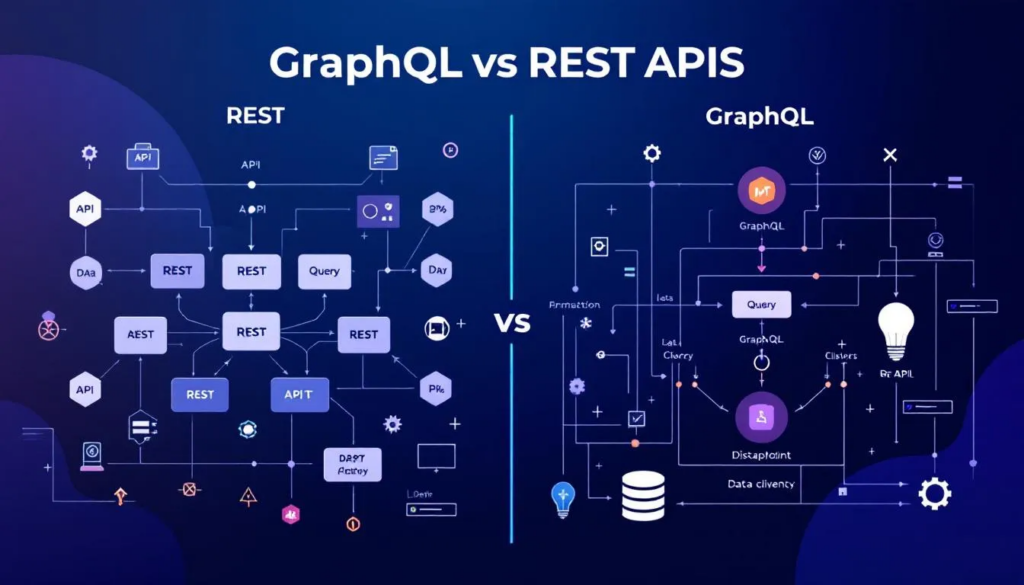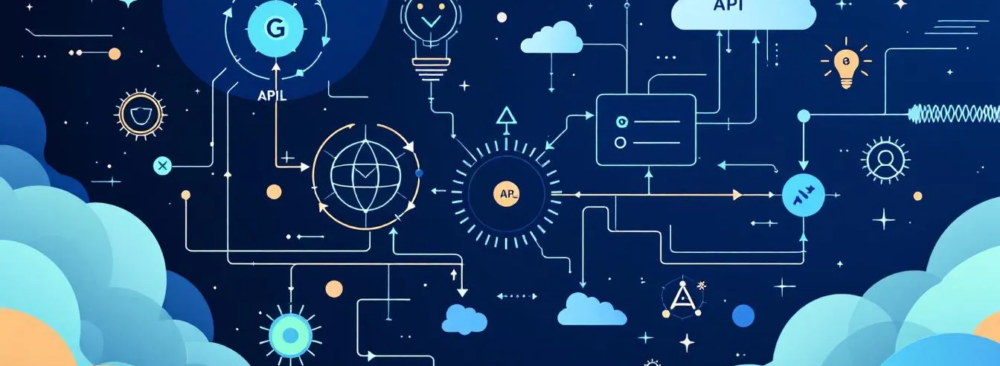REST APIs have long been the standard for designing web services. However, their limitations—particularly around data fetching—are becoming more apparent in modern, data-intensive applications. GraphQL, a query language developed by Facebook, offers an alternative approach that provides clients with greater control over the data they receive. This article explores the key differences between REST and GraphQL, highlighting the benefits of adopting GraphQL for projects that demand flexibility and precision.
REST vs. GraphQL: A Conceptual Overview

REST APIs are built on a resource-oriented architecture using standard HTTP methods such as GET, POST, PUT, and DELETE. Each resource is accessed via a unique URL, and the data returned from each endpoint is typically predefined. This model is simple, stateless, and easy to understand, which makes it a reliable option for many developers. However, it can also lead to inefficiencies, such as retrieving more data than necessary (over-fetching) or needing multiple requests to assemble related data (under-fetching).
GraphQL takes a different approach. Instead of relying on multiple endpoints for different resources, it uses a single endpoint that allows clients to specify exactly what data they need. This query-based structure not only reduces the number of requests but also minimizes unnecessary data transfer. The result is a more streamlined and customizable data-fetching experience, especially useful for applications with complex or dynamic data needs.
How GraphQL Works
At its core, GraphQL enables clients to send queries that define the shape and structure of the response. Clients are no longer constrained by the server’s implementation of specific endpoints. This makes GraphQL especially powerful in scenarios where data requirements vary between clients or components, such as in mobile or SPA frontends. By allowing the client to request only the relevant data, GraphQL eliminates both over-fetching and under-fetching issues commonly found in REST.
Another notable feature of GraphQL is its ability to handle nested and relational data through a single query. Rather than requiring several HTTP calls to gather related resources, a GraphQL query can retrieve deeply nested fields in one request. This not only enhances efficiency but also improves application performance and maintainability.
Comparing Efficiency and Flexibility
GraphQL stands out in its ability to fetch precisely the data needed in a single round trip. This efficiency is especially beneficial for applications that handle complex datasets, like social networks or e-commerce platforms. In contrast, REST’s reliance on multiple endpoints can result in higher network traffic and slower load times, particularly when assembling composite data views.
Additionally, GraphQL supports schema evolution without breaking existing queries. New fields can be added to the schema without requiring versioning or disrupting current clients. This contrasts with REST APIs, where changes often necessitate new versions to preserve backward compatibility.
Performance and Real-Time Capabilities
By consolidating requests, GraphQL helps reduce server load and optimize performance. This is especially critical for mobile environments, where reducing data transfer and latency can significantly enhance the user experience. GraphQL also supports real-time data through subscriptions, enabling clients to receive live updates without needing to poll the server repeatedly. This feature makes it ideal for chat applications, live dashboards, and other interactive experiences.
Despite these advantages, it's important to note that caching in GraphQL is more complex than in REST. While REST can leverage HTTP-level caching out of the box, GraphQL often requires custom strategies based on the structure of queries and response types. However, tools and best practices are continually evolving to address these challenges.
Integrating GraphQL Into Existing Systems
Adopting GraphQL doesn’t require abandoning your existing REST infrastructure. Many teams begin by introducing GraphQL as a thin layer on top of current REST endpoints. This approach allows for gradual migration and experimentation. With tools like Apollo Server or Express-GraphQL, developers can define a schema, write resolvers to fetch data, and set up a GraphQL server that serves as an intermediary between clients and REST APIs.
This setup also enables teams to aggregate multiple REST responses into a single GraphQL query. By doing so, clients benefit from simplified data access and developers can reduce redundancy in client-side logic.
Practical Schema Design and Best Practices
Designing a thoughtful schema is essential to maximizing the benefits of GraphQL. Schema definitions should reflect the relationships within your data and anticipate future growth. Intuitive naming conventions and logical structuring of types and fields make it easier for both developers and clients to work with the API.
Handling errors gracefully is another best practice in GraphQL development. GraphQL allows for partial responses, meaning successful parts of a query can still be returned even if one field fails. Providing useful error messages improves the developer experience and supports debugging.
Performance can also be improved through techniques like batching queries and identifying objects consistently to support caching. While GraphQL's flexibility enables rich queries, developers must remain vigilant to avoid overly complex requests that may strain server resources.
When GraphQL Makes the Most Sense
GraphQL is particularly beneficial for applications that require complex, customized data retrieval. Social platforms, e-commerce systems, and SaaS dashboards are all examples where the ability to request only what’s needed can result in significant performance gains. Similarly, applications with dynamic frontends—especially single-page or mobile apps—benefit from GraphQL's tailored data-fetching capabilities.
In microservices environments, GraphQL can serve as a unified data gateway, aggregating data from multiple services into a single coherent response. This streamlines frontend integration and reduces the need for custom logic across services.
Conclusion
GraphQL is not a universal replacement for REST, but it offers compelling advantages in situations where REST’s limitations become a bottleneck. Its ability to fetch precise data through a single endpoint, support real-time updates, and evolve without versioning makes it an attractive choice for many modern applications. If your project involves complex data interactions, dynamic user interfaces, or requires high performance under network constraints, exploring GraphQL could yield measurable improvements in both efficiency and developer experience.



